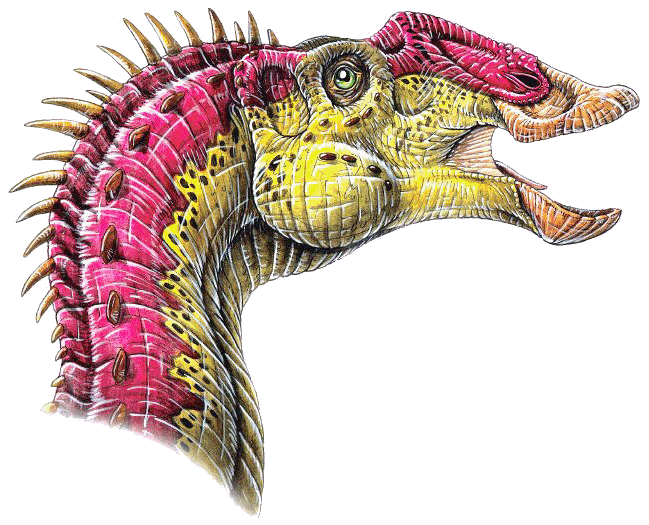|
|
|
Gryposaurus notabilis (Lambe,1914) |
 |
|
Name Means: |
"Hook-Nosed Lizard" |
Length: |
33 feet (10 m) |
|
Pronounced: |
grip-o-Saw-rus |
Weight: |
2 tons (1,800 kilos) |
|
When it lived: |
Late Cretaceous - 84 MYA |
|
|
|
Where found: |
Alberta, Canada |
|
|
|
| |
|
Gryposaurus was a common duck-billed dinosaur
known from a over 10 skulls, some bones, and one of the very few skin
casts ever found. The skin cast reveals the skin on its neck,
sides and belly were covered with smooth scales less than a quarter of
an inch in size. It had a long, narrow skull, highly-arched
nostrils, and a big bump on its snout. It was a large plant-eater that would have
traveled in herds while trying to avoid being eaten by some of the
earliest
tyrannosaur family members. Discovered in Alberta, Canada by
L. Lambe in 1914, the type species is G. notabilis.
Gryposaurus is much better known under the name
Kritosaurus notabilis. For a long time Kritosaurus and
Gryposaurus were considered to be the same genus, but in the
last twenty years it has become clear that the type material of
Kritosaurus is not particularly diagnostic, based on a
fragmentary skull. Gryposaurus, meanwhile, is based on much
better remains. Interestingly, it now appears that Kritosaurus
may actually be a "saurolophinid", instead of a "gryposaurinid",
illustrating the problems of establishing hadrosaurid taxa on material
that is either missing or has an inadequately preserved skull. |
hadrosaurid, hadrosaur, duck-billed dinosaur, was a
plant-eater that was about 30 feet (9 m) long. |
| |
|
|
|
|
| |
|
|
|
|
|
|
|
|
Edugraphics.Net | Feenixx Publishing |
|
|
|
